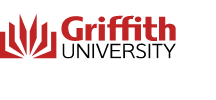
Griffith University
Research team












Yunjin Wang
Student
Prof Andrew O'Neil
aoneil
Prof Caitlin Byrne
cbyrne
Prof Anne Roiko
aroiko
Dr Savindi Caldera
scaldera
Dr Kimberley Reis
kreis
Jane Toner
Student
Ahmed Qasim
Student
Prof Cordia Chu
Researcher
Nick Heier
Student
Publications
